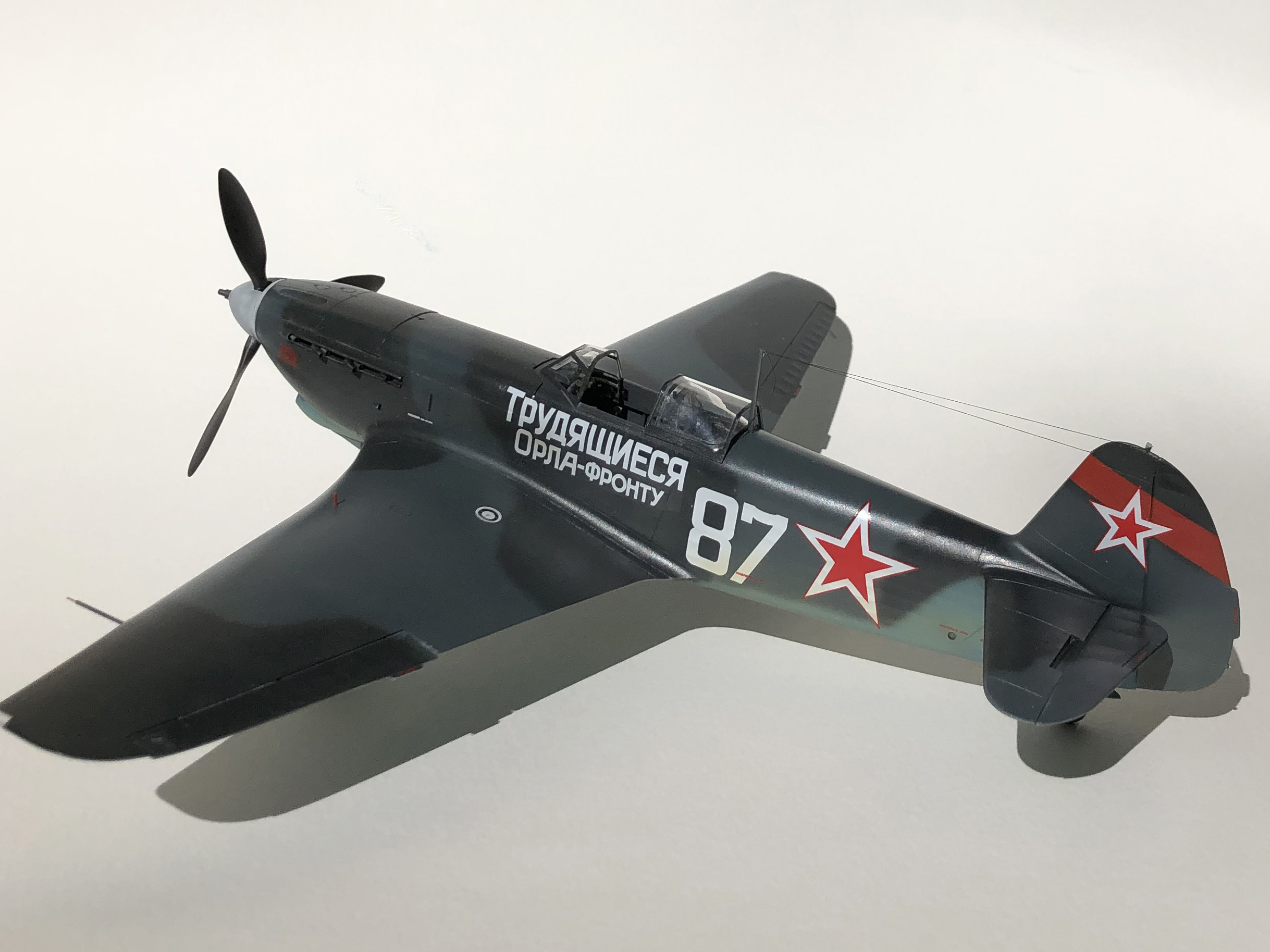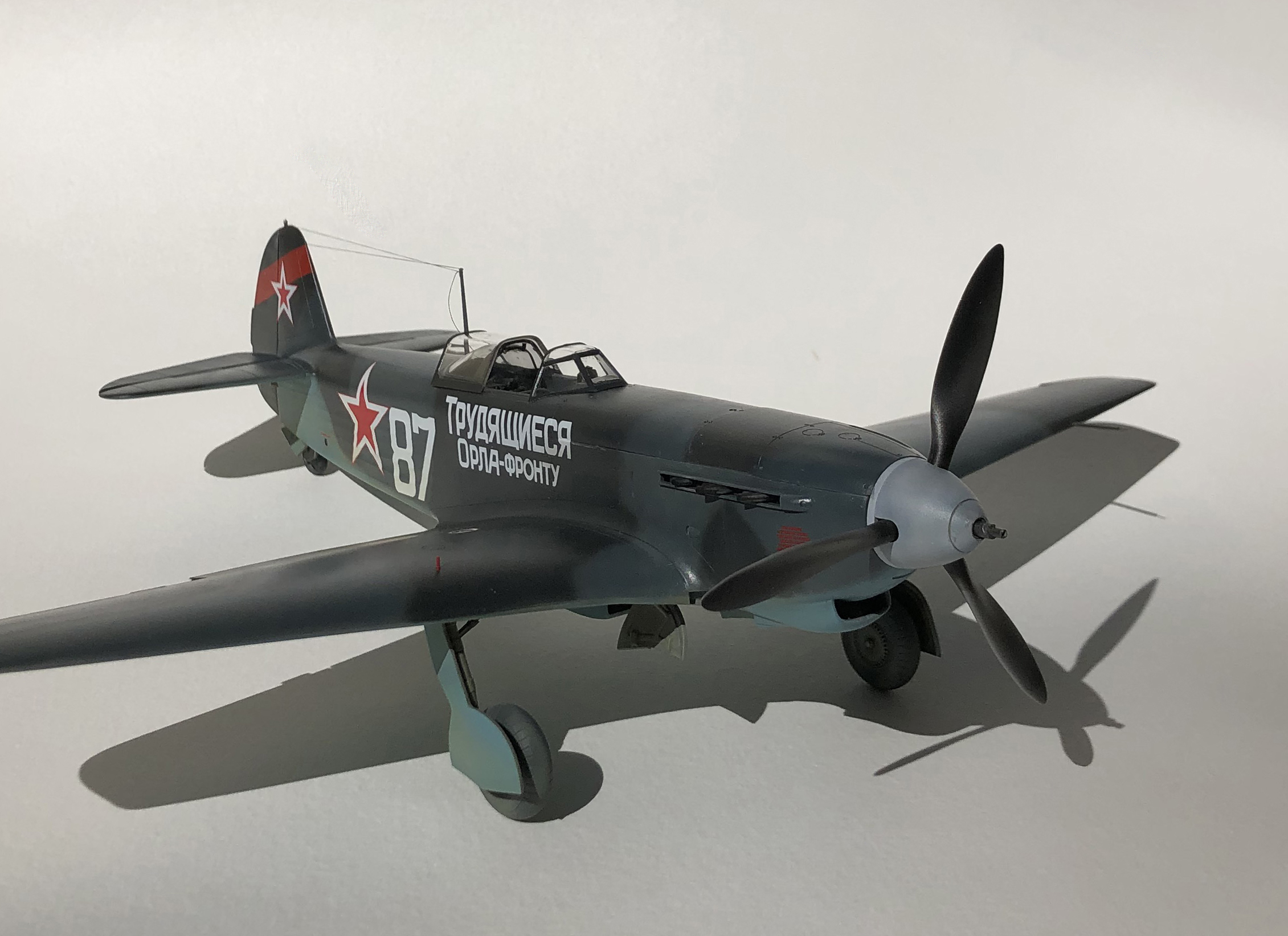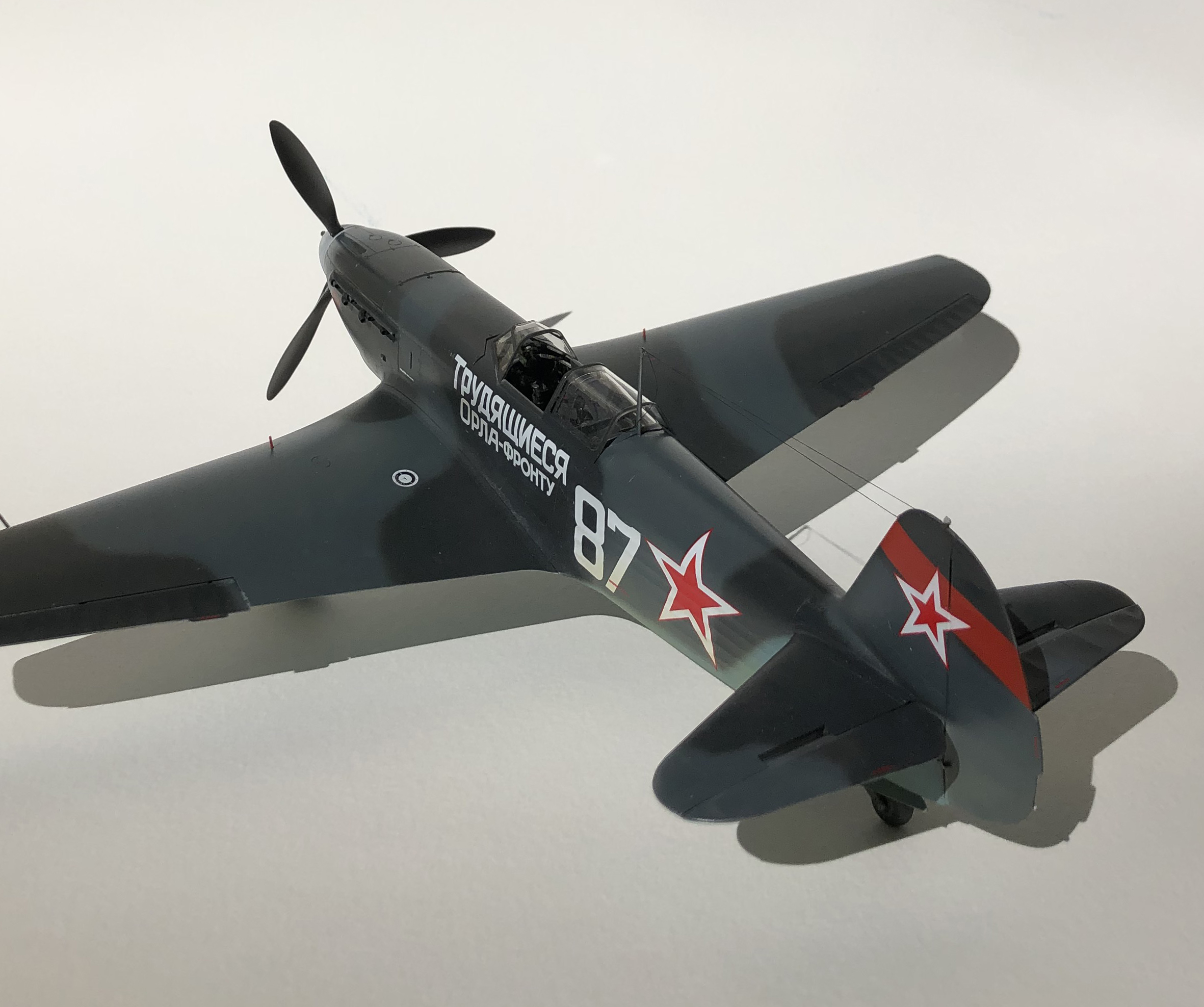ICM Yak-9T, Kit Number 32090, 1/32nd Scale
By Phillip Friddell on 21st Oct 2022
There’s word on the street that ICM kits are a tough date, nice in the box but a bit of a struggle to deal with from a modeler’s perspective. We all know that where there’s smoke there’s fire, to use an old saying, and there may well be an ICM model out there that’s a bit of a challenge to work with but this new Yak-9T kit isn’t it; rather, it’s relatively simple to assemble and very much looks the part once completed. Let’s talk about it for a minute!

One of the things that may strike you upon opening the sturdy box the model comes in is the relative lack of parts, particularly if you’ve recently been dealing with the offerings of manufacturers such as Tamiya or Zoukei-Mura. It’s not that the kit has been simplified or dumbed down, though. The real airplane wasn’t overly complicated and the kit accurately mimics that, albeit with a couple of minor omissions that are easily dealt with.
The kit is molded in a relatively soft grey plastic and the engraved detail is petite, consistent, and very much to scale. That scale thing is important because nothing is overdone on the model, and nothing detracts from its overall impression as a fine replica of a Second World War Yak fighter. Component assembly does look a bit odd at first glance and the five-piece fuselage assembly comes across as fragile until it’s been built up, at which point it becomes as sturdy as any other plastic model. Assembly is extremely linear and everything fits as intended.

Nothing is perfect, of course, and there are a couple of areas that require a bit of care in assembly. The landing gear is very much to scale and its attachment points are somewhat iffy, for example, and are vague to the point of being almost ethereal, but everything fits as intended with a little care on the modeler’s part. The secret is to make sure the main landing gear doors have been assembled to the gear legs and have thoroughly cured out before assembling the gear to the wings. That's because the tops of those doors actually come in contact with the lower surface of the wings once everything is assembled, providing a solid locator for the gear assembly. It’s one of those slow-and-steady assemblies and everything will fit if you do your part. While on the subject of landing gear, the tail wheel doors have somewhat vague locating points as well, easy enough to deal with but a potential area of concern nonetheless and the main landing gear wheels, which should be attached to the struts after the landing gear has been attached to the model and had a chance to set, need to have their locating holes opened up just a bit.
The cockpit is nicely done as supplied by ICM but the kit contains no photo etch or resin and said cockpit is a busy and somewhat cluttered space on the real airplane. We consulted some photography and enhanced things a bit in there which greatly improved the overall appearance of that part of the model. We also put a slot in the seat back to accept a shoulder harness as was done on the actual aircraft, an odd omission on the part of the manufacturer but one easily corrected. Eduard steel belts and harnesses are available for the kit and we used them on our review sample, which greatly enhanced the way things look in there. Another possible omission is the charging handle for the airplane’s 37mm cannon, which would be visible under the instrument panel if it actually lived there---we aren’t certain it was since we couldn’t find a photograph of a Yak-9T or similar "big gun" cockpit showing one. Since charging a 37mm gun by hand would be extremely difficult to do while flying an airplane we dealt with that possible omission by ignoring it completely, but you may choose to do otherwise.

One thing we definitely didn’t care for (but didn’t address on the review sample) is the over-simplified treatment of the ducts that live at the juncture of the wings to the fuselage. It’s possible ICM just didn’t know what lives in there, or maybe it was time to pull the plug on tooling costs when they got to that part of the model, but everything else is so nicely done that the omission stands out once you’re aware of it.
You’ll need to exercise a bit of care when fitting the engine to the fuselage if you plan on building your model buttoned up and ready for flight. We ended up trimming bits off the engine to make certain the two-piece upper cowling would fit snugly and actually gave some thought to leaving the engine out entirely, but since it keys the propeller in position and there’s no front to the fuselage, only a big hole with a shaft sticking out of it (just like on the real airplane), some part of the engine is necessary in order to have a solid landing for the prop. If you choose to build your model with the engine exposed none of this will matter and the instructions can be followed to the letter, albeit with the caveat that you'll want to add a lot more detail in the engine compartment if you do that.
The radiator bathtub and oil cooler fairing are a bit simplified, but virtually unnoticeable once the model is completed. Those are areas where there’s room for improvement and we suspect the aftermarket crowd are already working on enhancements for them.
The transparencies are crystal clear and fit like a charm, as do every other component of this model, and the overall fit is exemplary. The kit decals don’t look all that good on their carrier sheet but are appropriately thin and work perfectly and without drama over an eggshell or gloss paint finish. (One thing about those decals, though: The first scheme of the four provided by ICM is for a green and black example flown by the 812th Fighter Wing during the type’s early operations around the Kursk salient. The scheme is striking but can’t be applied to the model without some modification to the kit since the real airplane was a very early Yak-9T featuring a smaller spinner, ring and bead gun sight only, and sheet steel cockpit armor rather than the heavy armored glass behind the seat that we’re all familiar with.)

Finally, it's germane to address the It's Nice But We Wish They'd Done This Instead minefield that lives within every review. We're delighted to have a large-scale Yak-9 of any flavor, but we do wish ICM had modeled an earlier variant of the Yak-9 for us since the cockpit of the -9T was moved aft quite a bit to accommodate the extra length of that 37mm cannon. That fuselage configuration allows ICM the ability to replicate the Yak-9T, TD, and K, and possibly other variants as well, but the high-production Yak-9s (where most of the colorful schemes live) were the earlier ones with the original forward cockpit placement. If ICM had chosen a Yak-9D or DD as their subject matter it would also have been possible to build a late Yak-7 from the kit. Maybe someday...
With that said, we have to admit we thoroughly enjoyed working with this kit. It’s a class act, minor omissions notwithstanding, and is, at least in our opinion, an easy model to build. Most importantly, it looks the part, something that can’t be said for most kits of GPW Yak fighters. We’re delighted to have the kit and, it must be said, are somewhat astounded that it even exists given the situation in Ukraine at the moment. The model at its very worst provides an excellent starting point for a superb replica of this important Soviet fighter and it doesn’t take much effort to lift the kit far above the sum of its parts. Some skills are required but the kit is well worth the effort.
Can we have a Lavochkin now, please?

